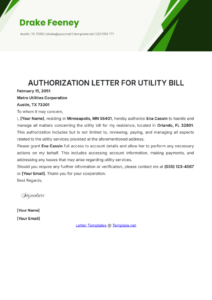Leveraging a pre-designed structure offers numerous advantages. It streamlines the notification process, reducing the likelihood of errors and omissions that could delay action. Clear and complete requests enable service providers to swiftly assess the validity of claims and take appropriate action. Furthermore, utilizing established formats helps ensure compliance with legal requirements, protecting rights holders and minimizing potential liabilities for online platforms.
Understanding the function and advantages of structured notifications is crucial for navigating online copyright protection. The following sections will explore specific components of these notices, provide guidance on their proper usage, and offer practical examples for various infringement scenarios.
Key Components of a DMCA Takedown Notice
Effective takedown notices require specific information to ensure clarity and expedite processing. These key components enable service providers to validate claims and act accordingly.
1. Identification of the copyrighted work: Clear and comprehensive identification is crucial. This might include titles, registration numbers, or detailed descriptions sufficient to distinguish the protected material.
2. Location of the infringing material: Precise URLs or other specific identifiers are necessary to locate the allegedly infringing content online. Vague or incomplete location information hinders effective action.
3. Contact information for the rights holder: Providing accurate contact information enables service providers to communicate with the rights holder, seek clarification, or request additional information if needed. This typically includes an email address, phone number, and physical address.
4. A statement of good faith belief: The notice must include a statement asserting a good faith belief that the use of the material in the manner complained of is not authorized by the copyright owner, its agent, or the law.
5. A statement of accuracy: Notices require a statement, under penalty of perjury, that the information provided is accurate and that the notifying party is authorized to act on behalf of the copyright owner.
6. Electronic or physical signature: A valid signature, either electronic or physical, of a person authorized to act on behalf of the owner of an exclusive right that is allegedly infringed is required to complete the notice.
Accurate and complete information in each of these areas ensures efficient processing of takedown requests and facilitates the resolution of copyright infringement issues online.
How to Create a DMCA Takedown Request
Creating a valid DMCA takedown request requires careful attention to detail and accurate information. A well-crafted request ensures efficient processing by service providers and facilitates prompt action against infringing content.
1. Identify the copyrighted work: Provide a clear and comprehensive description of the copyrighted material. Include titles, author names, registration numbers, or other specific identifying information. If the work is registered with the U.S. Copyright Office, providing the registration number strengthens the claim.
2. Locate the infringing material: Specify the exact location of the infringing content online. Provide direct URLs or other precise identifiers that enable the service provider to locate and identify the material quickly. Ambiguous or incomplete location information hinders prompt action.
3. Provide contact information: Include accurate and complete contact information for the copyright holder or an authorized representative. This should include a valid email address, phone number, and physical address. This allows service providers to communicate effectively regarding the request.
4. State a good faith belief: Include a statement asserting a good faith belief that the use of the copyrighted material in the manner complained of is not authorized by the copyright owner, its agent, or the law. This statement is a crucial legal requirement.
5. Affirm accuracy under penalty of perjury: Include a statement, under penalty of perjury, that the information provided in the notice is accurate and that the notifying party is authorized to act on behalf of the copyright owner. This affirms the validity of the claim.
6. Include a signature: A valid electronic or physical signature of a person authorized to act on behalf of the copyright owner is essential. This signature legally validates the takedown request.
7. Send the notice to the appropriate designated agent: Identify and send the notice to the designated agent of the online service provider hosting the infringing content. The U.S. Copyright Office maintains a directory of designated agents for registered service providers. Incorrectly addressed notices may delay processing.
8. Maintain records: Keep a copy of the takedown notice and all related communication for future reference. This documentation can prove invaluable in subsequent legal proceedings or disputes.
Following these steps ensures a complete and effective takedown request, increasing the likelihood of prompt action by the service provider and contributing to the protection of copyrighted material online. Accurate information and clear communication are vital for addressing copyright infringement efficiently.
Utilizing a standardized structure for addressing online copyright infringement offers significant advantages in protecting intellectual property rights. Accurate and comprehensive requests facilitate efficient processing by service providers, enabling swift action against infringing content. Understanding the key components of these requests, including proper identification of copyrighted works, precise location of infringing material, and valid contact information, ensures effective communication and strengthens the enforcement process. Adhering to established procedures safeguards rights holders and promotes responsible online content management.
Protecting intellectual property in the digital landscape requires vigilance and a clear understanding of available legal mechanisms. Effective copyright enforcement relies on clear communication, accurate information, and adherence to established procedures. By leveraging available tools and resources, rights holders can actively protect their creative works and maintain a healthy online ecosystem that respects intellectual property.

